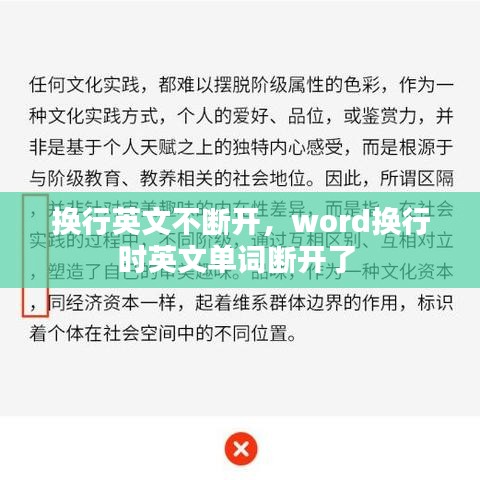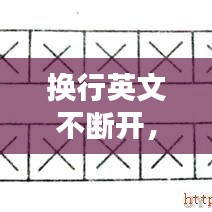Understanding the Concept of "Breaks" in English Line Wrapping
In the world of English writing, the concept of "breaks" is crucial when it comes to managing text flow and readability. Line wrapping is a fundamental aspect of text formatting, ensuring that text fits neatly within the boundaries of a document or display area. However, understanding how line breaks work in English can sometimes be a bit confusing. In this article, we will delve into the topic of "breaks" in English line wrapping, discussing why they are necessary and how they can be controlled.
What is Line Wrapping?
Line wrapping is the process of automatically moving text from one line to the next when the text reaches the right-hand margin of the current line. This is a common feature in word processors and text editors, as well as in web design and typesetting. The purpose of line wrapping is to ensure that the text remains legible and the layout remains consistent, regardless of the width of the text container.
Why Are Breaks Necessary?
There are several reasons why breaks are necessary in English line wrapping:
Readability: Lines that are too long can be difficult to read, especially in print. By breaking the text into manageable chunks, readers can more easily follow the content.
Consistency: In a document or a web page, it's important that the text aligns properly and looks consistent throughout. Line wrapping helps maintain this uniformity.
Formatting: Sometimes, certain words or phrases are too long to fit on a single line. Line wrapping allows for the text to be split appropriately, ensuring that the formatting remains correct.
Without proper line wrapping, text could become cluttered and disorganized, making it hard for readers to navigate and understand the content.
Types of Breaks in English Line Wrapping
There are different types of breaks that can occur in English line wrapping:
Hard Breaks: A hard break is a type of line break that cannot be moved. It is typically created by pressing the Enter key on a keyboard and is represented by a newline character in code. Hard breaks are used to separate paragraphs or to force a line break at a specific point in the text.
Soft Breaks: A soft break is a type of line break that can be moved. It is often used to indicate where a line break can occur if necessary, but is not required. Soft breaks are represented by a non-breaking space followed by a newline character in HTML or by a backslash followed by a newline character in other programming languages.
Hyphenated Breaks: When a word is too long to fit on a single line, it can be hyphenated to allow for a line break. This is particularly useful for long words that do not have hyphenation points built into the word itself.
Understanding the difference between these types of breaks is important for maintaining control over the text flow and ensuring that the formatting is as intended.
Controlling Line Wrapping in Different Contexts
Line wrapping can be controlled in various contexts, such as in word processors, web design, and programming:
Word Processors
In word processors like Microsoft Word or Google Docs, line wrapping is typically handled automatically. However, users can adjust the settings to control how text wraps. For example, you can set the text to wrap at a specific character count or to wrap within a certain margin.
Web Design
In web design, line wrapping is often handled through CSS (Cascading Style Sheets). You can set the width of a text container and specify how the text should wrap within that container. This can be done using properties like `word-wrap`, `white-space`, and `overflow` to control the flow of text.
Programming
In programming, line wrapping is controlled by the syntax and formatting rules of the language. For example, in HTML, you can use the `
` tag to explicitly create a line break, or you can use CSS to control the wrapping of text within HTML elements.
Conclusion
Line wrapping and the management of breaks in English text are essential for creating a readable and visually appealing document. By understanding the different types of breaks and how they work, writers and designers can ensure that their text is presented in the most effective manner. Whether you're working in a word processor, designing a website, or coding an application, knowing how
转载请注明来自西安市浐灞生态区思畅装饰工程部,本文标题:《换行英文不断开,word换行时英文单词断开了 》















 蜀ICP备2022005971号-1
蜀ICP备2022005971号-1
还没有评论,来说两句吧...